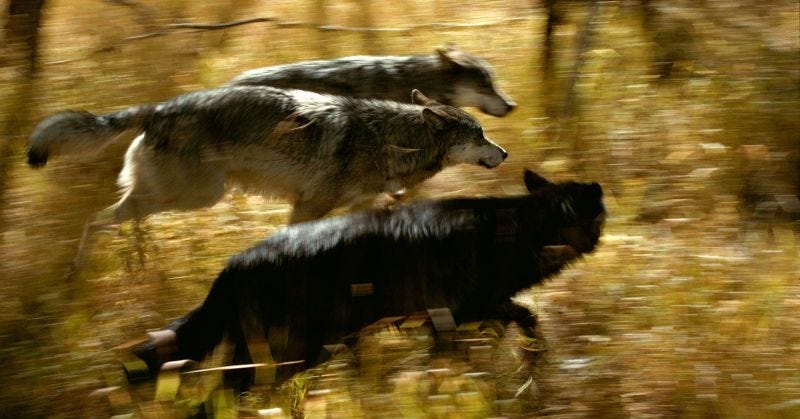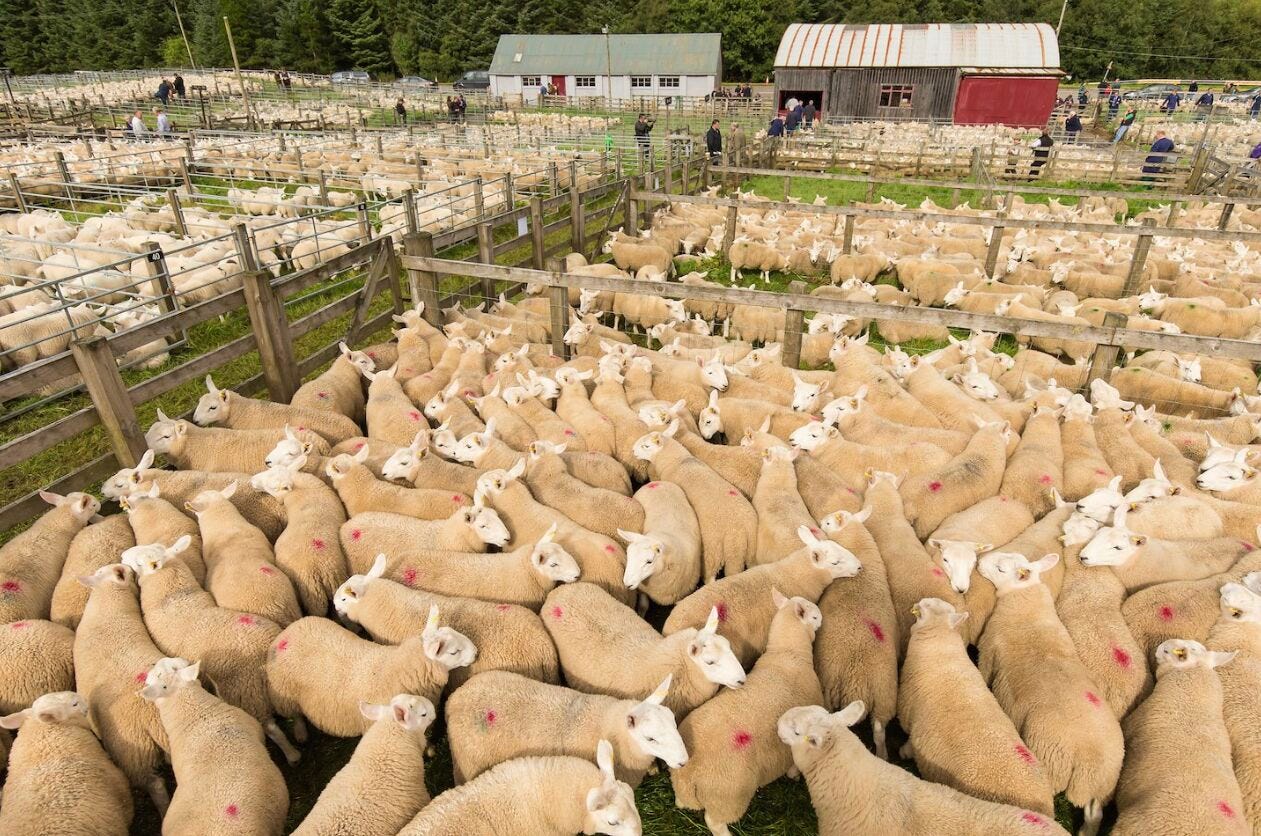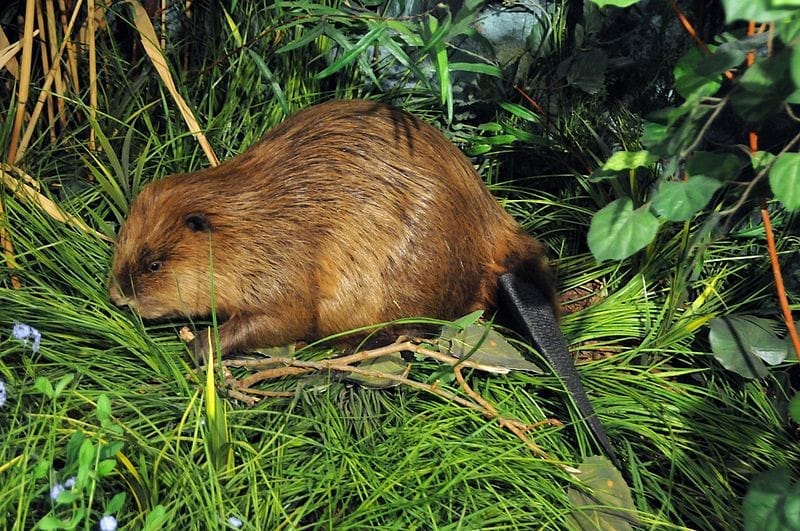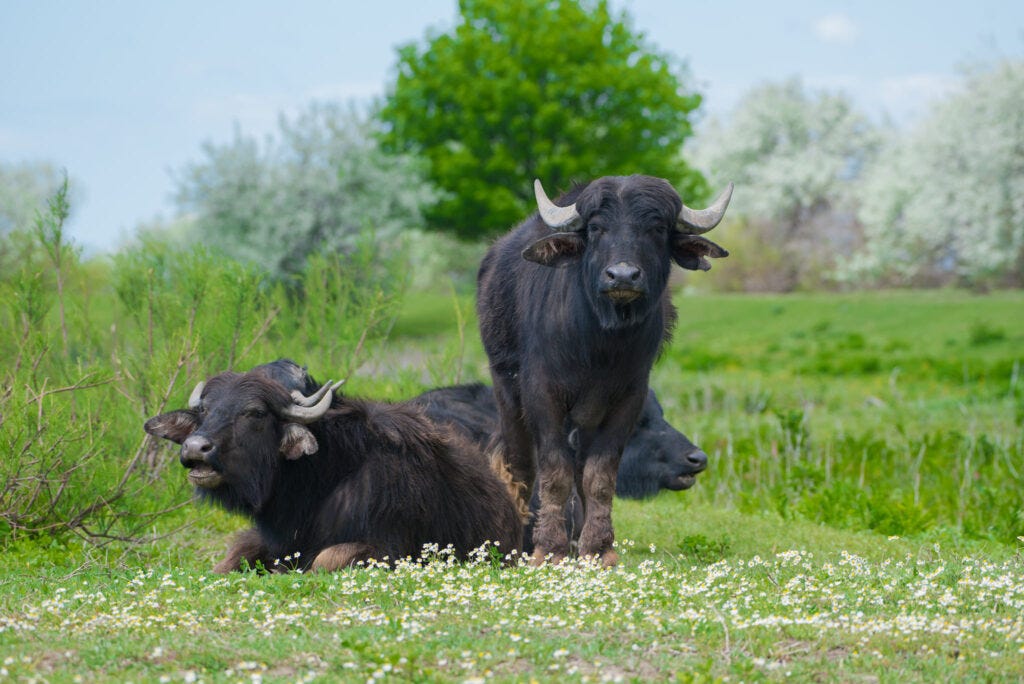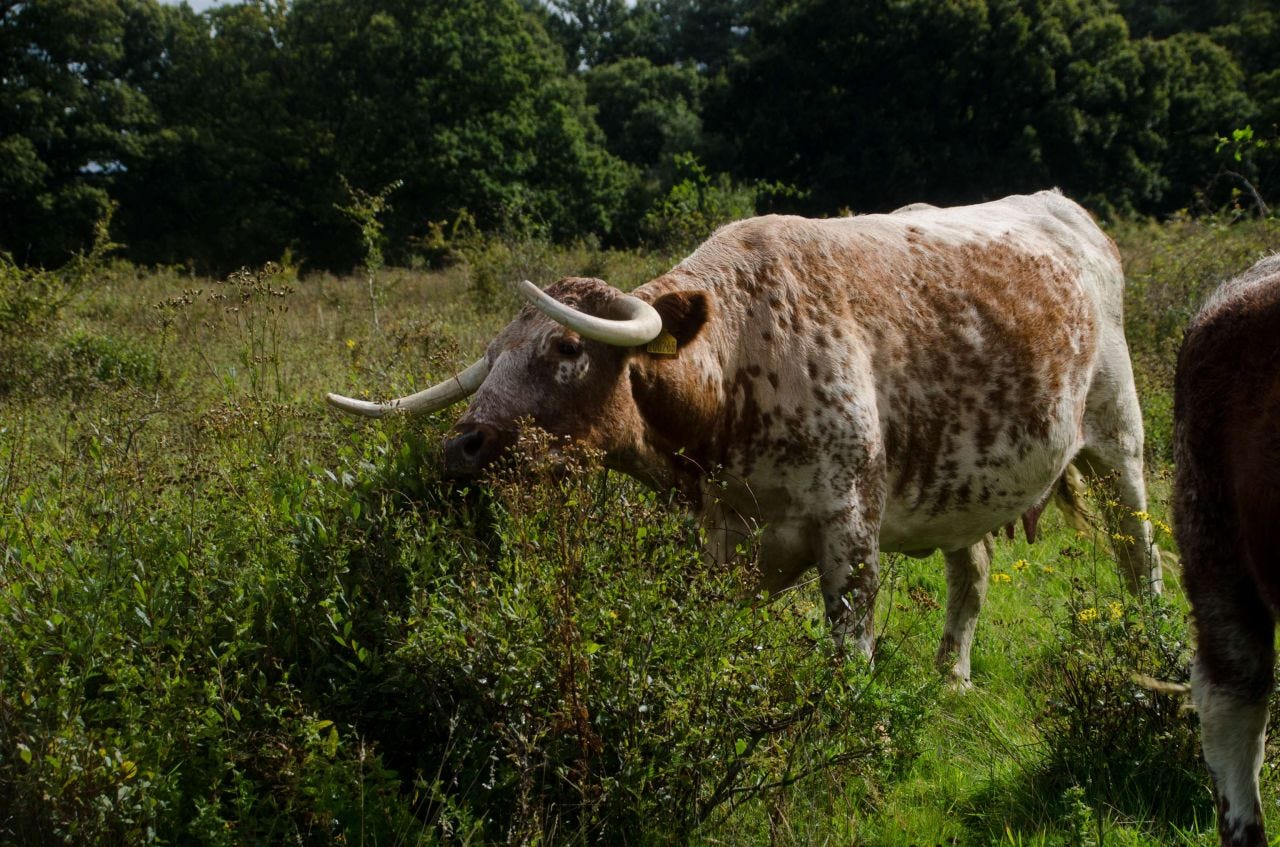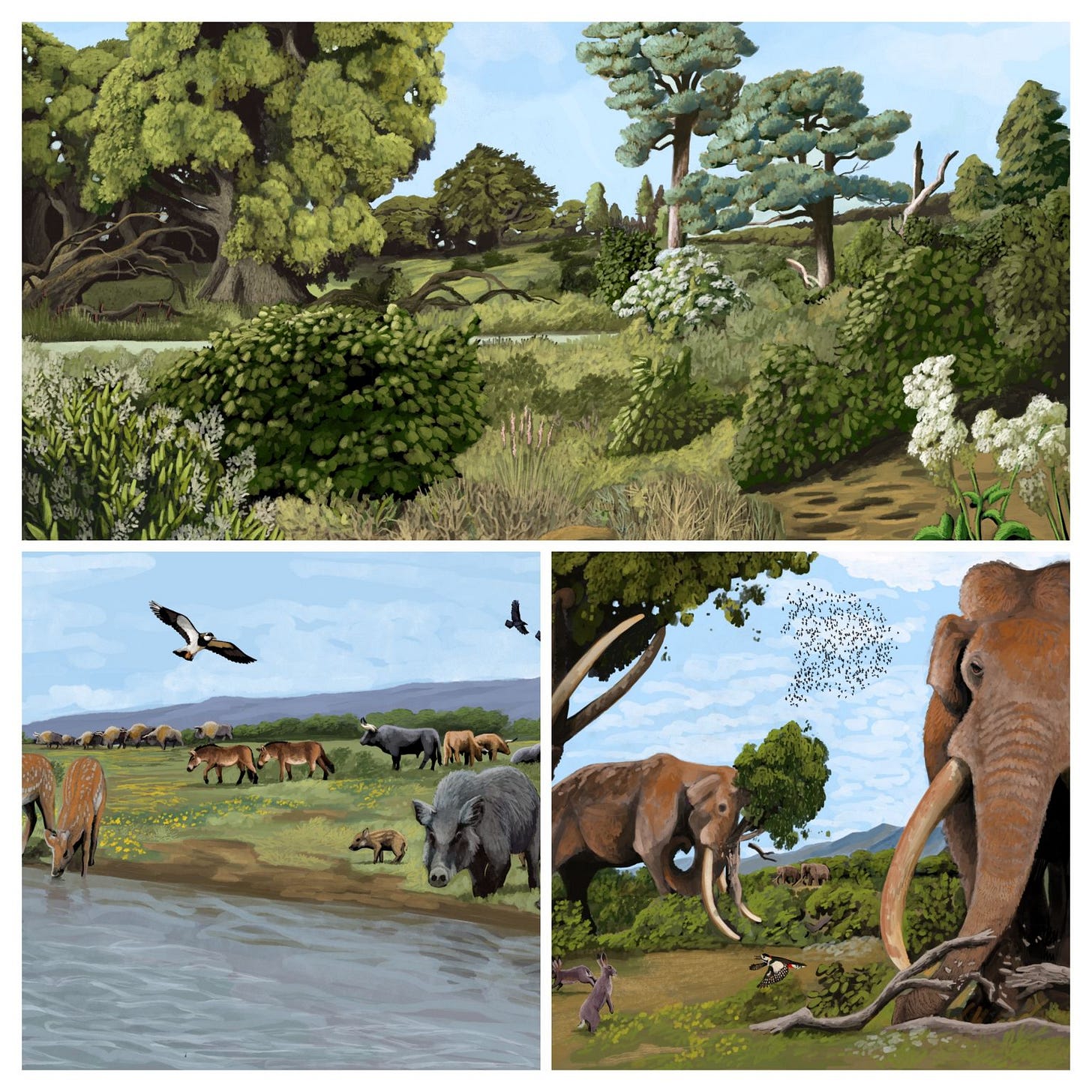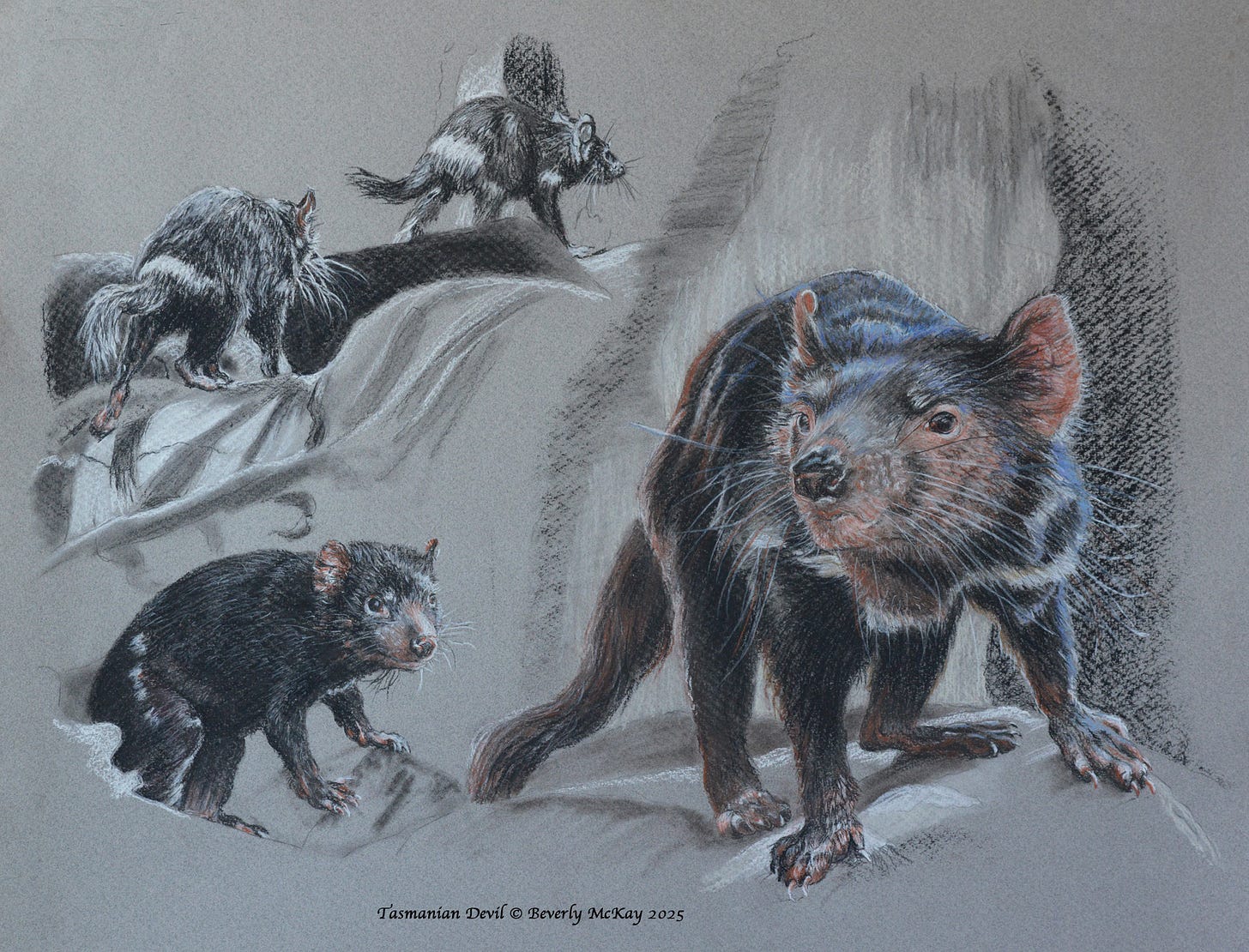Welcome to the latest edition of the Rewilder Weekly! 🦬🌳🐺🌞🌍
Before we go into this week’s stories, give yourself the gift of this two-minute clip by the Carpathia foundation. It’s a series of clips from wildlife cameras, taken over the course of the whole of 2024, that give you an amazing sense of the teeming biodiversity in the Faragas mountains. Man, now there’s a place I’d like to roam for a few months!
Now then, let’s get on with it - wishing you a good week!
Cheers,
👉 As a reminder: If you come across stories you’d like to see featured in an upcoming edition of the Rewilder Weekly, send them to me and I’ll gladly do what I can.
1) March 20th: World Rewilding Day!
That’s two days from now, this coming Thursday … are you planning something for it? I most certainly hope so! Financially supporting one of the increasing rewilding organizations around the world is hugely impactful - but so is your personal engagement. Donate, by all means. Help fund what you can - but on World Rewilding Day (#rewildingtogether), find one of those many organizations in your neck of the woods, give them a call and ask, “Hi, how can I help?”
The Global Rewilding Alliance writes: “Millions of people around the world are responding to a deep, positive, visceral drive – to support nature’s recovery. But many of these people aren’t even aware of rewilding yet! You may not call yourself a rewilder, but in taking action for nature recovery, we are rewilding together. Rewilders, indigenous communities, farmers, fishers, lawmakers, scientists, policymakers, innovators, local communities, governments, investors – rewilders are everywhere. Together, across the globe, we form an even stronger and more credible movement.”
👉 Go here to learn more and get involved
👉 and here to engage on LinkedIn
2) Rewilding Europe’s World Rewilding Day Webinar
On the occasion of World Rewilding Day, a host of events (both in-person and online) are planned on and around the 20th of March. One of these events is a free webinar by Rewilding Europe that features a series of presentations and an interactive Q&A. In the words of the organizers: “Whether you’re passionate about rewilding, work in nature conservation, or are simply curious to learn more, this is a unique opportunity to be inspired and get involved.”
As wildlife populations recover across Europe, and ecosystems regenerate, rewilders are equally focused on local communities and the benefits of living alongside nature. The webinar’s experts will highlight how they foster “wildlife-smart communities” that embrace coexistence measures, and how rewilding efforts play crucial roles in helping to rethink and rebuild rural development with local products.
👉 Go here for all the details - and to register, of course!
👉 and here to engage on LinkedIn
3) Our up-and-down history with the wolf
The story of the wolf is also our story. The tales of our species are entwined and there was a time when we did, and very successfully so, collaborate. Unfortunately, the human species, instead of learning, often forgets and then, through chaos, starts again from scratch. And so we learned from the wolf, we collaborated with the wolf, then switched gears to persecute the wolf, then we protected the wolf and now … see-saw, up and down, back and forth.
In my latest article I look into our shared histories, from prehistoric times to Charlemagne, and from Little Red Riding Hood and utter carnage - to a reprieve that began in the 1950s, the rise of environmentalism, the importance of Poland, fragmentation and rising numbers and the facts behind those numbers ... to the scapegoating and downgrading protection of wolves just now. Now, more than ever before, in light of the biodiversity loss and climate change crises, a collaboration (not just coexistence) with the wolf can help get us out of the mess we have created.
👉 and here to engage on LinkedIn
4) Are 6.8 million sheep too much for Scotland?
In brief, the answer is an obvious yes. But this excellent article by SCOTLAND: The Big Picture goes deep to make sense of it all with a balanced write-up. It asks key questions and offers clear insight and numbers. For anyone willing to leave an entrenched position and come at this question with an open mind, this article means the beginning of valuable conversations that will, I have no doubt about it, lead to positive and large-scale change in Scotland.
The article’s author, Hugh Webster, writes that, “Opponents of rewilding tend to dismiss the return of lynx to Scotland as ‘wholly unacceptable’, as if any level of livestock predation is unthinkable, rather than the international norm. Conversely, lynx advocates sometimes downplay the risk of conflicts, as if individual sheep losses hardly matter. Both positions are extreme, ignoring the reality that both sheep and lynx have important non-economic value for many people, deeply rooted in the different emotional, cultural and socio-ecological value systems we all cherish.” Webster highlights the false choice presented by some lobbies when they try to pit food production against nature recovery. We don’t have to pick one or the other - by making smart choices for healthy ecosystems, we can both.
👉 and here to engage on LinkedIn
5) Beavers save Czeck government $1.2 million
A lovely story about beavers that somehow got past me when it was first reported. Beavers are glorious ecosystem engineers. Where they appear, land, water, flora and fauna evolve and improve. Here’s what happened: The Czech government had the funds for a new dam, but building was stalled for years over building permit issues. Last January the project leaders were surprised to discover that eight beavers had simply gone ahead and built the dam!
Radio Prague reported the story about the busy beaver colony and how they had built several dams - for free - exactly where they were needed to protect a natural wetland region. “Beavers always know best. The places where they build dams are always chosen just right - better than when we design it on paper,” said Jaroslav Obermajer, Head of the Central Bohemian office of the Czech Nature and Landscape Protection Agency. Here’s to many more such nature solutions - oh and, isn’t this a another great example to show what happens when you let nature lead?
👉 and here to engage on LinkedIn
6) The recovery of Europe’s largest natural river delta
Situated in Ukraine, Romania and Moldova, the Danube Delta is Europe’s largest remaining natural river delta. It was negatively impacted by decades of infrastructure building, but now, thanks to the combined efforts of many, nature recovery efforts are going strong with: the removal of 10 obsolete dams; the reintroduction of 63 Konik horses, 20 red deer, 40 kulan, and other large herbivores; the restoration of 500 ha of the Tarutino steppe; boosting biodiversity with the release of 10 juvenile eagle owls; launching nature-based tourism initiatives and holding eco-ethno festivals to reconnect local communities with their natural and cultural heritage. Impressive, right!?
The collaboration between Rewilding Europe and Endangered Landscapes & Seascapes Programme perfectly illustrates the theme of this year’s World Rewilding Day “Rewilding Together” - collaborations such as these are the only way to rapidly scale up rewilding efforts globally to the degree urgently needed. As David Thomas, Programme Director of ELSP says, “Addressing the linked crises of biodiversity and climate change is key to safeguarding the planet upon which we all depend. The enormity of the problem needs to be matched by large-scale vision and action, and collaboration. Recovery of nature at the scale being delivered by Rewilding Europe is a response that has the potential to address these challenges simultaneously, providing benefits to people locally and globally.”
👉 and here to engage on LinkedIn
7) Rewilding needs free-roaming large grazers
Large grazers are ecosystem engineers. European bison, horses, deer, cattle and more are hugely beneficial for nature, if they get to roam freely. They improve the land by trampling and wallowing. They improve flora by feeding and seeding. The open canopy, give light - everywhere they’re active, both flora and fauna become more richly diverse. In a new article, Matt Phelps (Lead Ecologist at Knepp), goes deep on the subject.
He also addresses important and uncomfortable questions such as “If you have to reduce (cull) the number of animals at Knepp every year to sustain a healthy ecosystem, why not do away with them altogether, so you don’t have to kill them?” and “We know that cows are bad for the planet, why do you have them at all?” The man has sound arguments. He even addresses the idea of just having a single sex herd … good answers, really. Frankly, as long as humanity continues to feed on livestock, I think the Knepp way is, all things considered, the best way to go.
👉 and here to engage on LinkedIn
8) More proof of the value and need for large grazers
Professor Jens-Christian Svenning and colleagues from around the world have done a great deal in recent years to challenge the long-held assumption that Europe’s temperate landscapes were once uniformly covered by closed forests. They have found that prehistoric landscapes were far more open. These insights are important for rewilding efforts - and very much tied with the previous story about the importance of free-roaming large grazers at Knepp.
Way back when, herds of mega herbivores ensured that paths were trampled far and wide, that tree and bush covers were broken up and kept light, allowing sunlight to create highly varied landscapes such as the one pictured above. Jens-Christian writes that, in their study, they “… reconstruct vegetation patterns from the Last Interglacial (~129,000–116,000 years ago, prior to the human-driven megafauna extinction) and uncover a highly heterogeneous landscape—not the dense, continuous forests often assumed.”
👉 and here to engage on LinkedIn
As usual, the Rewilder Weekly concludes with a nature science illustration. This time science illustrator Beverly McKay gives us her study of the Tasmanian devil. The critter’s been in the news recently because, for the first time in 3’000 years, it set foot again on mainland Australia. Found out about that heartening nature recovery initiative in WildArk’s brief video (bonus for Thor fans: Chris Hemsworth’s in it, too). Anyway - here’s to more Tasmanian devils!
If you enjoy the Rewilder Weekly …
… consider supporting my work. Your paid subscription will help generate the funds needed to realize a unique rewilding book I’m working on (if you want to know more about it, let me know). And, of course, that paid subscription also ensures that the Rewilder Weekly will always keep going for those who cannot afford to pay. A thousand thanks!
That’s it for this week’s edition! For more rewilding insights and stories from around the globe, use the #rewilding hashtag on LinkedIn and follow people, organizations and groups that are as passionate about rewilding as you are. Let’s keep connecting and growing the movement!












